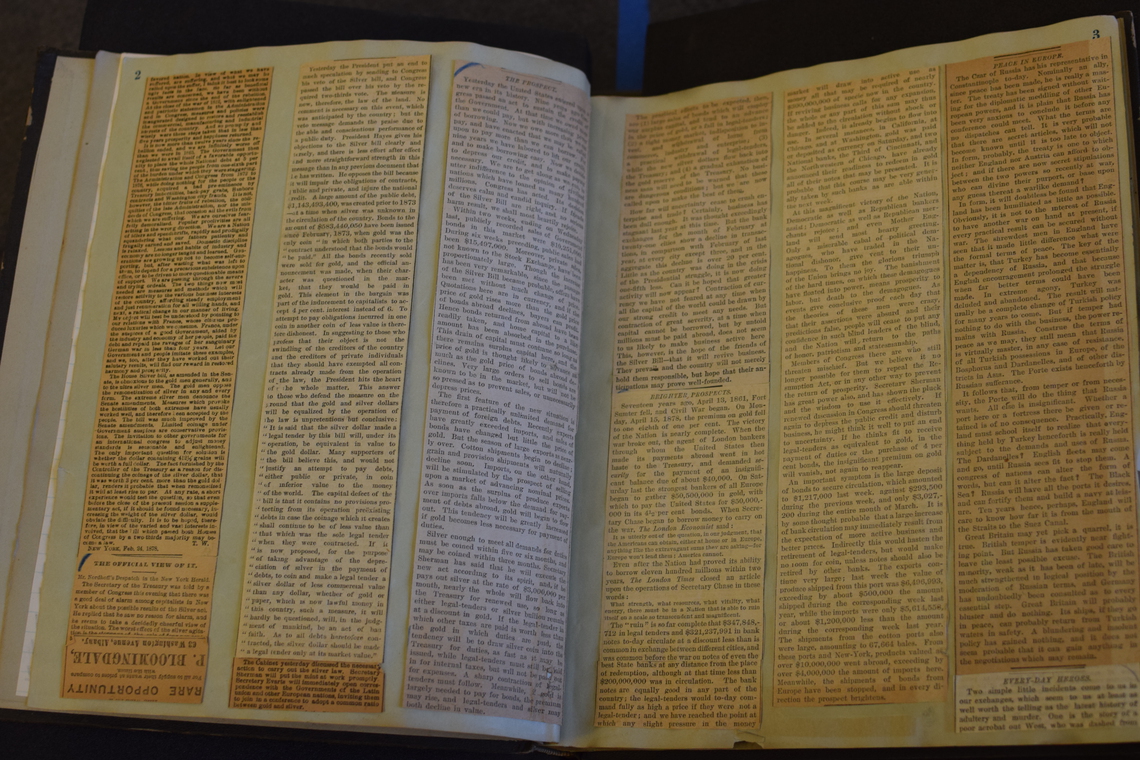Mark Twain's Self-Gumming Scrapbook
-
In the 19th century, scrapbooks were an especially popular method for collecting and organizing writing material. A similar practice, the commonplace book, dates back centuries: commonplace books were essentially journals used to record quotations, recipes, poems, proverbs, etc (see this previous RBML exhibition on early modern memory devices). But the explosion of print material, particularly of newspapers, in the 19th century created a wealth of disposable material which could now be directly cut and pasted into journals, hence the invention of the scrapbook. Writers mostly used scrapbooks to collect newspaper clippings, but they might also add other materials, such as poetry and prose from periodicals. Among the famous authors who used scrapbooks are Mark Twain, Susan B. Anthony, Charles Summer, Frederick Douglass, Washington Irving, and Nathaniel Hawthorne. Twain was such an advocate of the scrapbook that he even patented and sold his own “self-pasting” scrapbook which came pre-gummed so that the reader merely needed to lightly moisten each leaf and stick his or her clipping automatically. On display is one of Twain’s self-pasting scrapbooks, which someone has diligently filled in with newspaper clippings.
Introduction
- Label
- Mark Twain's Self-Gumming Scrapbook
- Author
- TBD
- Original Publication Date
- 1873
- New Publication Date
- 1873
- Publisher
- Slote, Woodman & Co. NY
- Location
- RBML
- Case
- 6
